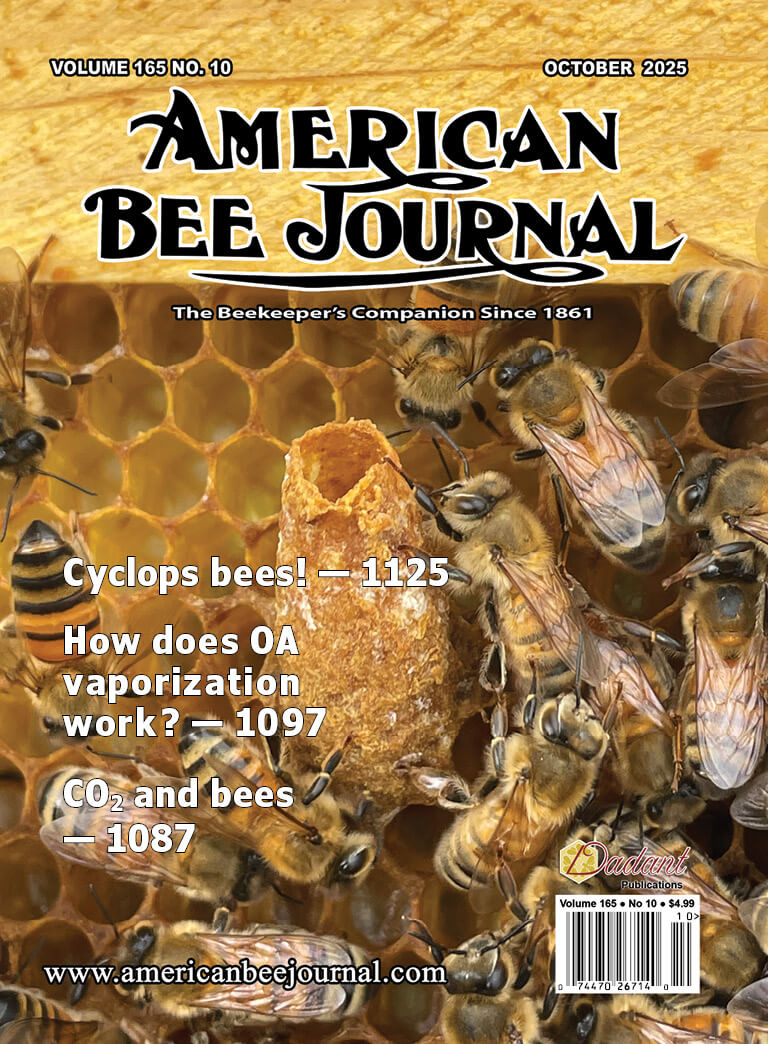Consuming cold honey
Honey bee colonies — anywhere in the world — require some way to store food products for lean times. Such foodless periods occur in all climates. While stores are required anytime there is a dearth, the Queen Mother of all dearths is a long, hard, cold winter.
After reading the simplest of bee books, beekeepers new and old know that bees require honey as a winter food source. No doubt, pollen is just as important, but my
discussion here pertains to eating cold honey during winter months. To my knowledge, pollen plays no integral part in bees’ consumption of winter honey.
Bees require winter stores. We all repeat it. We all know it, but what I personally don’t fully understand is exactly how bees eat frigid honey food stores.
Honey does not readily freeze
Several times within this piece, I refer to frozen honey. While honey can freeze, it must be very cold for that to actually happen.
Honey doesn’t freeze solid like ice but becomes more viscous and eventually forms a crystalline or glassy state. The freezing point of honey ranges between -35°C to -50°C (-31°F to -58°F), depending on its exact
composition.
Why honey doesn’t freeze easily
1. Low water content:
Honey usually contains only about 16-18% water, making it a poor choice for freezing in the traditional sense.
2. High sugar concentration:
The sugars in honey (primarily fructose and glucose) form a supersaturated solution that resists freezing.
Instead of freezing, honey tends to crystallize at higher temperatures (around 14°C or 57°F), forming sugar crystals.
3. Glass-like transition:
At extremely low temperatures (below -40°F or C), honey transitions into an amorphous solid (a glass-like state) rather than freezing into a crystalline solid like water.
In northeastern Ohio, where I and my bees reside, it was very cold only a few weeks ago. I know, I know that U.S. states farther north and all of Canada chuckle at Ohio’s opinion of cold, but -10°F is cold anywhere that temperature occurs.
Right now, as I write for you, it is about 38°F outside. The wind is still, so the wind chill temperature is also about the same. In my hives, that I can see in my backyard apiary, honey stores would be about that same temperature. That’s cold honey.
Yes, I know — the healthy wintering colony gives off a bit of heat — about the amount of heat from a 60W incandescent lightbulb (if you can still find one). Would that byproduct heat not warm the honey (some)? I’m sure it would. But would that bit of heat be enough to liquify a significant part of the colony’s honey stores to the point that it could be drunk using bees’ lapping-sucking mouthparts? I don’t think so. That frigid honey is going to be very, very thick.|
Having no teeth or chewing structures, honey bees do not seemingly have a way of returning the honey, in small amounts, into a flowable liquid form at those low temperatures; indeed, at any temperature.1 I think bees’ cold honey consumption procedure must be like my grandkids licking a lollipop. Water (saliva?) would be used to liquify small amounts of thick honey …


